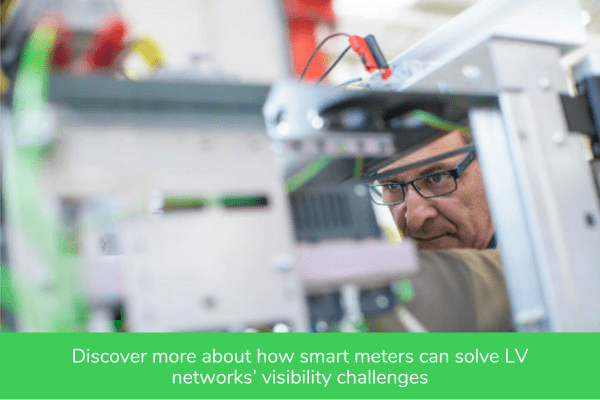What are three of LV grid operators’ top challenges?
All aspects of the energy landscape are changing – including how electricity is produced, consumed, planned, and managed. It’s part of the Electricity 4.0 revolution, where a more electric and digital world addresses the climate and energy crises and enables a sustainable and resilient future.
This means the low voltage (LV) side of the network, not the traditional star of the show from grid operators’ perspectives, has entered the spotlight.
Three of the most pressing LV network challenges for grid operators to address include:
- Controlling the increase in distributed energy resources (PV, wind, etc.) going into the grid: LV networks are missing out on DER benefits because they aren’t effectively managing the boom in renewables and the increase in bidirectional power flow.
- Supporting the rise of prosumers and changes in residential energy use: Utilities must better prepare for the prosumer revolution. Consumers are becoming prosumers,who both consume and produce energy and also provide excess or stored energy to the grid, but this requires increased demand-side flexibility and better support from utilities.
- Preparing for the substantial increase in electric vehicle charging: LV networks will be heavily affected by EV use. They have to prepare the infrastructure to support widespread charging. The growth in EV adoption is estimated to increase electricity consumption by 25%. This demand puts additional stress on the grid and operators must be prepared.
One way to solve these problems is by improving LV network visibility
For example, think about the challenge of increased DER use. Grid operators need to increase visibility on the LV side of the distribution grid. This lets them better manage energy use because they know where DERs are installed and being used. Without that insight and accurate and timely information about asset health and networks, it’s impossible to optimally manage the local distribution network.
To get this insight, distribution utilities should incorporate smart meters and IoT into their network management strategy
Low voltage network management is a critical capability for more efficient distribution network planning and operations. Technology, such as smart meters and IoT sensors, are at the heart of network improvements. Their penetration rate in LV network has dramatically increased in the past years, rising from less than 1% thirty years ago to around 60% today in the U.S. There are approximately 260 million active metering points in Europe with more scheduled as part of the EU’s clean energy legislation.

How does this technology improve LV networks’ operations?
Primarily, it’s because of the data these digital solutions collect, aggregate, and process. Grid operators can analyze the data and use it to understand the characteristics, behavior, and performance of the distribution grid as well as anticipate future needs – both short-term, such as predicting and managing demand peaks, and long-term, such as preparing for EV charging growth.
Utilities can leverage these insights to:
- Create and propose valuable services to customer
- Anticipate and manage demand
- Optimize network planning and operations
- Gain network visibility
- Improve grid resilience
- Analyze supply quality
- Detect and repair faults faster
- Improve customer satisfaction
Learn how our utility customer is using smart meters and analytics in its LV network to detect energy losses and improve power quality
EcoStruxure Grid Metering Expert (GME) provides utilities with greater understanding of the characteristics, behavior, performance, and future needs of their low voltage networks. One of our utility customers used EcoStruxure Grid Metering Expert in its low voltage network.
Our technology discovers the electrical connection between smart meters with feeders and phases upstream within 96% accuracy. GME’s advanced analytics precisely located energy losses. This allowed the utility to detect areas with fraud and energy leaks and enhanced the transformer balance by enabling reconnections in the LV network. This reduced technical losses and improved the transformer lifecycle. The advanced analytics solution improved the utility’s power quality, reduced maintenance costs, and boosted customer satisfaction.
To learn more, view our use case on low voltage management for improving network planning and operations.

